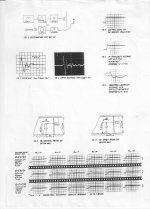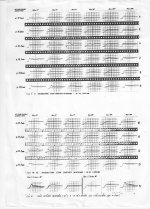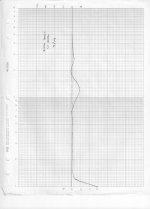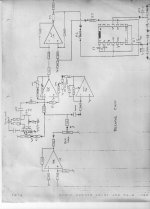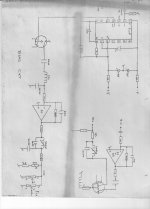Subscribed.I do remember that when I was around pro-audio live production microphones were selected based on their particular properties for each purpose. A mic for a drum head may have been different than one for the overhead cymbals and the same went for male and female vocals. But that was a part of the production process, just as a guitar player may like a certain type of distortion pedal like a phaser or a particular guitar head for a particular sound. I don't think anyone could tell Eric Clapton or someone like that they did not know what they were doing by using a particular amplifier or even a different tuned guitar for different songs. But that would be very different if you were recording an orchestra live than if you were doing a pop band or even a country and western band with fiddle. We do have to separate per-production from post-processing and reproduction. These are all very different pieces of the puzzle.
In the same time, it is a free place where you can publicly praise yourself . However, not sure it is the best thing you can do for your image.I think that it is enough that I care enough to contribute here and try to keep everyone learning something new.
Esperado, I do have a broad background in audio design, both pro and consumer. If I state that I worked on something in the past, it should not be considered 'boasting'. It is just what has been done over the decades. I regret that the way you translate my English really irks you, but I just talk this way. Sorry.
Pavel, I haven't read all single posts of this huge thread, but I don't remember YOU sharing any of your designs. Why would expect JC to do it then?
He has elated a lot of great advice that open minded people in audio business or hobby (me, the latter) can treasure or ignore.
Regards
He has elated a lot of great advice that open minded people in audio business or hobby (me, the latter) can treasure or ignore.
Regards
Christophe, I'm not the slightest bit surprised ... what I am surprised is how little interest there is in this topic. Probably, because it has nothing to do with the normal aspects discussed in these conversations, which is the theory of why things are so, and everything about the implementation, which is all about what really happens when the, ahem!, hits the fan ...Surprised, but I can make the difference in the same tune between 96KHz and 192KHz even on my PC speakers !!!
I have to organize a blind test, i do not believe-it !
Meaning, that why it sounds different is not because different, or more information, is stored in the one version or the other of the track, but because the playback quality of your PC varies with the sample rate of the audio being processed at the time. If you took the 96 version and resampled, off-line, to 192 then it would sound like the downloaded 192. Likewise, the 192 downsampled to 96 would sound like the retrieved 96.
Sometimes the reasons are so obvious, yet not exciting enough to warrant intellectual head scratching, that they are quickly discarded ...
Frank
Christophe, I'm not the slightest bit surprised ... what I am surprised is how little interest there is in this topic. Probably, because it has nothing to do with the normal aspects discussed in these conversations, which is the theory of why things are so, and everything about the implementation, which is all about what really happens when the, ahem!, hits the fan ...
Meaning, that why it sounds different is not because different, or more information, is stored in the one version or the other of the track, but because the playback quality of your PC varies with the sample rate of the audio being processed at the time. If you took the 96 version and resampled, off-line, to 192 then it would sound like the downloaded 192. Likewise, the 192 downsampled to 96 would sound like the retrieved 96.
Sometimes the reasons are so obvious, yet not exciting enough to warrant intellectual head scratching, that they are quickly discarded ...
Frank
Try that.
The down sampling will sound the same if and only if you have used the same algorithm that 2L used.
The up sampling will not however, since it doesn't exist a single algorithm that can recreate the lost information.
It's easy to compare the waveforms in a software like cooledit or audition.
(IPhone quote sucks sorry for bandwith)
What abilities don't I have SY, that annoy you?
I have no idea what you're talking about.
That we all know. And a good reason to let others give you credit.Esperado, I do have a broad background in audio design, both pro and consumer.
You have nothing to prove, so, your permanent complacency do not serve you. You are not alone, here, to have a background in audio design, no reason to be so proud of-it. It is a job like an other. Just technology, nothing that can bring us the Nobel Prize.
Fas42, thanks for the track, i will try.
I've done this experiment many times now, it's 100% predictable for me: if I change the sample rate, up or down, it changes the reproduced quality. I use Audacity to do the resampling, which has an algorithm that takes the process seriously: it can take half an hour, easily, for a 4 minute stereo track to be crunched, and then I use Audacity again to compare waveforms -- nothing is added, nothing is lost, no matter how times times you do this; only different if you start with a hi-res file that has genuine, above 20kHz, info. Yes, all hi-res files have ultra sonic content, but normally it's pure rubbish, noise, random meandering meaning nothing ...Try that.
The down sampling will sound the same if and only if you have used the same algorithm that 2L used.
The up sampling will not however, since it doesn't exist a single algorithm that can recreate the lost information.
It's easy to compare the waveforms in a software like cooledit or audition.
(IPhone quote sucks sorry for bandwith)
Frank
John thought your 1st sentence in post #31769 was for him. It was not.
Thanks.
Regarding microphones, Wavebourn's answer is the one. Different types have different polar patterns, hence the level and nature of echo and ambience noise will differ -- the more that interesting echo information is picked up, the fuller and usually more satisfying the sound.
IMO, of course ...

Frank
IMO, of course ...
Frank
NOTE the 1966 article by Mead Killion for the AES showing 1 G input resistors at mike input. Let's give credit where it is due!
This principle is obvious from the derivation of KT/C noise, no designer first "noticed" it by accident. Victoreen made huge resistors for ionization chambers in the 40's they were bulky and expensive. Neumann new as big a value as is practical and cost effective as possible in the 50's.
B&K made measuring instruments not recording mics the low frequency noise did not matter, like any large company once the BOM is finalized and a product is released it does not get changed until the next gen.
Last edited:
- Status
- Not open for further replies.
- Home
- Member Areas
- The Lounge
- John Curl's Blowtorch preamplifier part II
